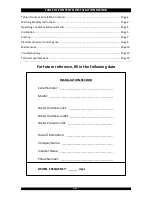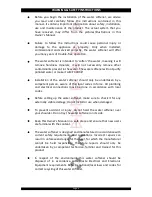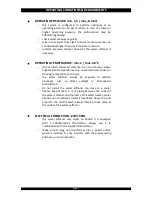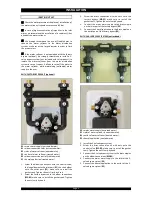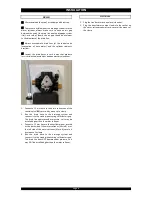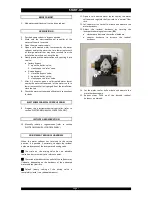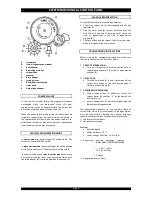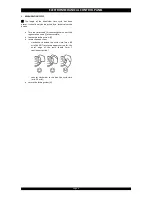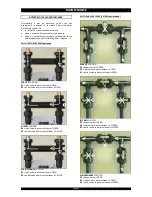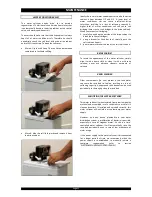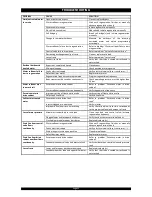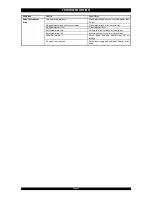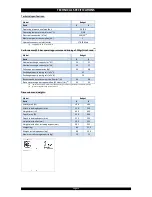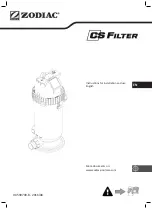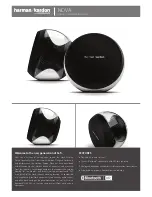
START-UP
Page 7
BRINE CABINET
1.
Add water conditioner salt to the brine cabinet.
PRESSURIZING
2.
Put the bypass system in 'bypass' position.
3.
Make sure the electromechanical controller of the
water softener is 'in service'.
4.
Open the mains water supply.
5.
Open a cold treated water faucet nearby the water
softener and let the water run for a few minutes until
all foreign material that may have resulted from the
installation is washed out; close the tap.
6.
Gently pressurize the water softener, by putting it into
service:
factory bypass:
1.
open the 'outlet' valve;
2.
slowly open the 'inlet' valve.
3-valve bypass:
1.
close the 'bypass' valve;
2.
open the 'outlet' valve;
3.
slowly open the 'inlet' valve.
7.
After 2-3 minutes, open a cold treated water faucet
nearby the water softener and let the water run for a
few minutes until all air is purged from the installation;
close the tap.
8.
Check the water softener and all hydraulic connections
for leaks.
ELECTROMECHANICAL CONTROL PANEL
9.
Program the electromechanical controller (refer to
section ‘ELECTROMECHANICAL CONTROL PANEL’).
INITIATE A REGENERATION
10.
Manually initiate a regeneration (refer to section
‘ELECTROMECHANICAL CONTROL PANEL’).
ADJUSTMENT RESIDUAL HARDNESS
When the water softener has returned to the service
position, it is possible, if necessary, to adjust the residual
hardness by means of the incorporated mixing valve.
The scale on the mixing valve has no absolute
indication, but serves only as a reference point.
The residual hardness at the outlet of the softener may
fluctuate, depending on the hardness of the untreated
water and the flow rate.
Default factory setting of the mixing valve is
completely closed (= no residual hardness).
11.
Open a cold treated water faucet nearby the water
softener and regulate the flow rate to a ‘normal’ flow
rate.
12.
Let the water run for half a minute and measure the
water hardness.
13.
Adjust the residual hardness, by turning the
incorporated mixing valve screw (
):
clockwise to decrease the residual hardness;
counter clockwise to increase the residual
hardness.
14.
Let the water run for half a minute and measure the
water hardness again.
15.
Repeat steps 13-14 until the desired residual
hardness is obtained.


